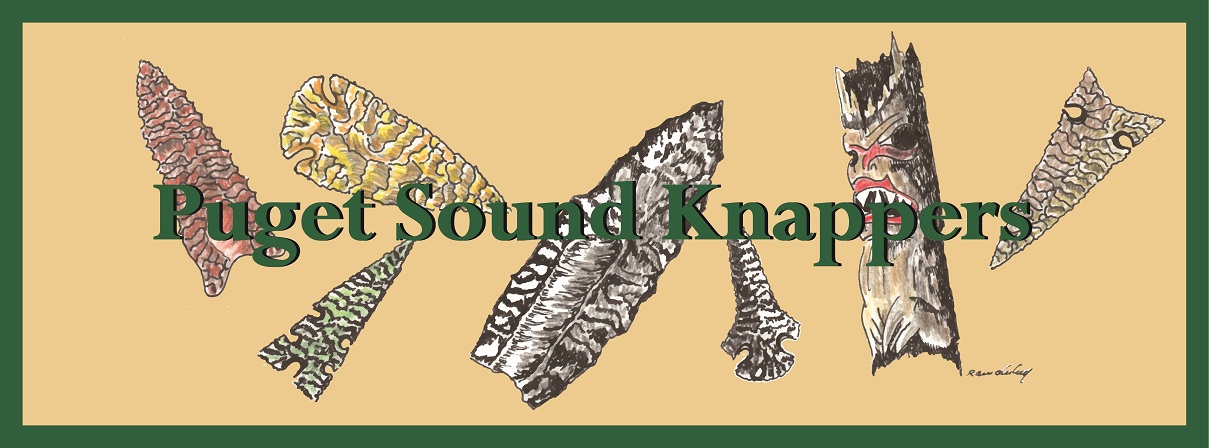 |
 |
|
Windust Associated Dates: 13,900 – 8000 Y.B.P.* *As with all date assignations, the Windust date associations are dependent on geography. Eastern Plateau range is roughly 10,000 – 8000 Y.B.P.; Western Plateau indications are that Windust may have occurred as early as 13,900 Y.B.P. but was “certainly present” by 13,000 Y.B.P.; Source: Ames, National Park Service, U.S. Dept. of the Interior. See full discussion under Arch/Cultures/Age Ranges of Projectiles. Ames also assigns a date range to Windust (repeated several times in his paper) of “11,000-7,000 BC” --- or 13,000- 9000 Y.B.P. as dates are expressed in this database. A table put together by archaeologists working for the National Park Service appears below. These appear to be the “hardest” dates for Windust, inasmuch as they seem to be the products of the best science. The dates shown are for several sites; all indicate much older date associations for Windust than were previously supposed.
ABOVE: Windust point date ranges and key sites. Source: http://www.archaeology.wsu.edu/lind_coulee/site_interpretations.htm **NOTE: Not included in this table is the famous Lind Coulee site, the Windust Phase (11,000 – 7000 BC) site. The NPS author and others believe there are some serious flaws in the dating of the site, that may position it roughly 2000 years older than its stated age of -+8700 YBP.
General Description: shoulder edge straight to rounded; shoulder straight to upwardly-angled; base concave; stem straight to slightly contracting There are three recognized Windust categories: Type A, Type B and Type C. TYPE A
ABOVE: WIND01: Type A example of Windust point. Source: http://www.archaeology.wsu.edu/lind_coulee/site_interpretations.htm TYPE BDescribed as a “squat lanceolate projectile point with broad, straight to contracting stem and concave to notched base. Type Site: Windust Caves (Rice 1965); Marmes Rockshelter (Rice 1972); Temporal Range: c.10000-9000 B.P.
ABOVE: WIND02: Windust point, Type B example; source: http://www.archaeology.wsu.edu/lind_coulee/site_interpretations.htm TYPE C Described as a “squat lanceolate projectile point with deeply concave or notched base. Type Site: Windust Caves (Rice 1965); Marmes Rockshelter (Rice 1972); Temporal Range: c.10000-9000 B.P.
ABOVE: WIND03: Windust point, Type C; source: http://www.archaeology.wsu.edu/lind_coulee/site_interpretations.htm/strong>
ABOVE: WIND04: Windust point series from Hatwai (Sappington, 1994) WINDUST POINT THUMBNAIL GALLERY (172 images: 86 source images/86 thumbnails)
ABOVE, LEFT: WIND05: Windust point
ABOVE: WIND08: chisel-tip Windust point; Buhl burial Site, Twin Falls, Idaho. “This Windust point was found in 1989 under the right side of the cranium of the "Buhl Woman" burial. The Buhl site is located in Twin Falls County, Idaho about 1.5 miles (2.5 km) north of the town of Buhl. The initial discovery was made by gravel quarry workers who pulled a human femur out of the screen of a rock crusher. The actually burial site was quickly located after the initial discovery. Bone samples taken from the burial produced a radio carbon date of 10,675 + 95 years before present. Study of the teeth and bones suggest that the "Buhl Woman" was between 17 and 21 years old when she died. No genetic testing was done but the skull's morphology was similar to both American Indian and East Asian populations. This stemmed biface has been referred to as a Windust point by archaeologists. Windust points were first described by H.S. Rice in 1965 from samples that were found in the oldest deposits of Cave C of the Windust Caves in Washington. Windust points have also been found in Idaho and Oregon. A small percentage of these points have oddly shaped, and deliberately made, "chisel-tips" in place of a sharp point. The tips are made by the removal of a flake on each face which forms a narrow edge instead of a point. This Windust point does have a "chisel-tip." It is made of opaque black obsidian and it measures 3 13/16 inches (96.6mm) long.” Wintu Associated Dates: 1000 - 200 Y.B.P. General Description: There appears to be a great deal of form variation within the type classified as Wintu. Wintu points may include: a concave (to straight) based point with deep, upwards-trending side notches; a square-stemmed variant; another which has a stem that narrows. Blade edges may exhibit no serrations or be extremely heavily serrated.
ABOVE: WINT01: Wintu points; Redbank Site, California. Source: Gene Price, photographer; image reproduced in article by M. Steven Shackley in U. of Berkeley “The Archaeological Research Facility Newsletter” WINTU POINT THUMBNAIL GALLERY (22 images: 11 source images/11 thumbnails)
test |
|||||||||||||||||||||||||||||||||||||||||||||||||||||||||||||||||||||||||||||||||||||||||||||||||||||||||||||||||||||||||||||||||||||||||||||||||
|
©2010 J Keffer |